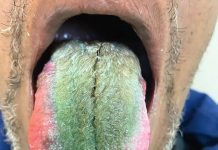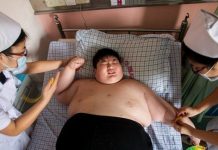Shuan Sim and Maya Kaufman, Crain's New York Business  Bloomberg
Bloomberg
Last Thursday was the deadline for home health aides to have received at least one dose of a COVID-19 vaccine. By the next day their agencies reported a mix of results, with some largely compliant and others facing staff shortages.
The Oct. 7 deadline covered personnel working at state-regulated facilities including adult care facilities, home health agencies, long-term-care programs, AIDS home care programs, hospice and diagnostic and treatment centers. The mandate had a Sept. 27 deadline for staff working in hospitals and nursing homes, and a Nov. 1 one for individuals working at psychiatric or specialty hospitals in the Office of Mental Health or Office for People with Developmental Disabilities networks.
“For some agencies, the impact had been very significant,” said Al Cardillo, president and CEO of the Home Care Association of New York State, which represents over 400 home care organizations.
Early reports showed varying hits to staffing levels, Cardillo said. One dataset he received Friday from an organization noted a range of 10% to 38% for unvaccinated aides across its provider agencies, from New York City to Buffalo. Another report from nine organizations said collectively they would have to let go of 900 aides, he said.
For agencies experiencing such heavy hits, the disruption to patient care could be big, Cardillo said. One agency reported nearly a fifth of its staff, or about 500 workers, were unvaccinated, and under the mandate, their services would be lost to patients, he said.
“If each of these aides cared for two or three patients, the loss of these workers alone could represent about 1,800 patients affected by the mandate for this organization,” he added.
In and around the city, organizations appeared to be largely unscathed. At NYC Health + Hospitals/Community Care, the public health system’s certified home health agency, which serves almost 11,500 patients, there were no disruptions, a spokesman said. Though agency-specific vaccination numbers were not available, the health system had achieved a 94% vaccination rate, and staffing contingency plans had been implemented ahead of the mandate, he said.
Similarly at MJHS Health System, a provider of hospice and home care in Brooklyn, and RiverSpring Living in the Bronx, an assisted living and home care provider, vaccine compliance had been robust. At the former, 98% of its 359 hospice employees and 96% of its 128 home care employees had been vaccinated by deadline, said Alexander Balko, CEO of MJHS. At RiverSpring, 96% of its 475 home care workers were compliant, said Deborah Messina, senior vice president of operations.
At Kips Bay–based ArchCare, which runs nursing homes, assisted living facilities and home health programs, 23 of some 528 health aides had been let go, said Scott LaRue, president and CEO. Prior to the deadline, there had been 144 aides who had indicated reluctance to the vaccine, he said.
Some agencies were still waiting for data to come in. For Visiting Nurse Services of New York, the expectation is that up to 300 workers—or 4% of staff—would become ineligible to work, a spokeswoman said.
Agency leadership said they were hopeful for staff to come around regarding vaccinations. Messina said that those at RiverSpring who remain noncompliant will be given two week’s furlough, followed by dismissal thereafter.
Even for agencies with high vaccination rates, the impact to patients is palpable, Cardillo said. A downstate agency emailed him that it had met the mandate with 96% compliance but had to let 175 aides go, he said.
“That’s still a lot of patients who might need someone new to take over, and these tend to be fragile patients with medically complex needs,” he noted. “That’s still a disruption even if someone else covers.”
The state had reached out to the association offering supplemental staffing resources, such as emergency medical workers or students, Cardillo said.
“While that might help hospitals or nursing homes following a natural disaster, that’s not really how home care works,” he said.
The industry requires state-credentialed workers who have been specialized in this work, and staffing had already been scarce prepandemic, he said.
All told, Balko of MJHS believed the mandate was the right approach, despite its potential to disrupt staffing.
However, Cardillo lamented that the state hadn’t come up with a different plan for those who remained noncompliant, such as a longer grace period before termination.
“Unloading, suspending or firing those unvaccinated all at once is an absurdity,” he said. “When you lose the workforce, they’re not coming back.”
Source link : https://www.modernhealthcare.com/home-health/home-health-agencies-see-mixed-results-vaccine-mandate











